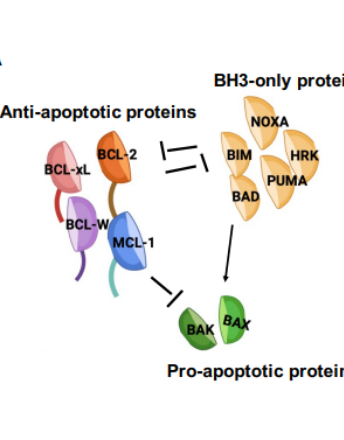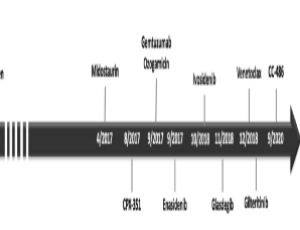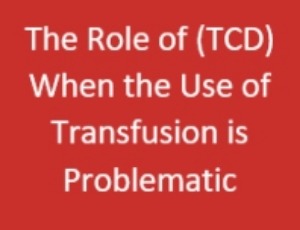Loading
Journal of Clinical Haematology
ISSN: 2766-4686

2021
Volume 2, Issue 3, p73-105
Articles published in this issue are Open Access and licensed under Creative Commons Attribution License (CC BY NC) where the readers can reuse, download, distribute the article in whole or part by mentioning proper credits to the authors.
Functional Precision Profiling: The Way Forward for Personalized Medicine
Lyndsey Flanagan, Siobhan Glavey, Triona Ní Chonghaile
Multiple Myeloma (MM) is a malignancy of the antibodyproducing plasma cells found in the bone marrow. In recent years, we have witnessed significant improvements made in both the diagnostic criteria and novel therapies for MM, resulting in the prolonged survival of MM patients. Approved novel therapies include proteasome inhibitors (bortezomib and carfilzomib), immunomodulatory drugs (thalidomide, lenalidomide & pomalidomide), monoclonal antibodies (daratumumab, elotuzumab & isatuximab) and B-cell maturation antigens (Belantamab). Recently, CAR T cell therapy has been FDA approved for MM treatment. Despite these advancements, MM remains an incurable cancer with suboptimal overall survival, with many patients developing relapsed/refractory MM. Plasma cell leukemia (PCL) is a rare and aggressive variant of MM. PCL is classified as either primary PCL, which develops de novo, or secondary PCL, that can arise in the late and advanced stages of MM.
J Clin Haematol, 2021, Volume 2, Issue 3, p73-79 | DOI: 10.33696/haematology.2.031
Unesbulin – a Novel Anti-tubulin Cancer Therapeutic
Lan Gao, Marla Weetall, Kylie O’Keefe, Elizabeth Goodwin, Ronald Kong
A hallmark of all cancers is the rapid rates of cell division associated with tumor growth. Rapid cell division is dependent upon the assembly and disassembly of microtubules, which are essential components of the mitotic spindle and are critical for the movement and separation of chromosomes during cell division. Microtubules are dynamic filaments that are composed of αβ-tubulin heterodimers. Microtubules also play key roles in determining cell shape, cell motility, and transportation of organelles within the cell. Blocking normal microtubular function leads to a failure of cells to progress through cell division and ultimately results in cell death.
J Clin Haematol, 2021, Volume 2, Issue 3, p80-85 | DOI: 10.33696/haematology.2.032
Moving the Treatment of Acute Myeloid Leukemia to the Outpatient Setting: Current Expert Perspectives and Consensus Findings
Chetasi Talati, Kendra L. Sweet, Daniel A. Pollyea, Sandra E. Kurtin, Jeff Klaus, Jennifer Eatrides, Harry P. Erba
In patients with newly diagnosed acute myeloid leukemia (AML), the initial treatment decision is often predicated on the individual’s candidacy for intensive chemotherapy. For those patients considered eligible for intensive treatment, the standard approach historically has been induction with a combination chemotherapy regimen such as cytarabine for 7 days and an anthracycline for 3 days (“7+3” therapy). Those patients who achieve remission will typically go on to receive consolidation chemotherapy and/or allogeneic hematopoietic cell transplantation (HCT).
J Clin Haematol, 2021, Volume 2, Issue 3, p86-94 | DOI: 10.33696/haematology.2.033
Atezolizumab Monotherapy as First-line Treatment in Patients with Advanced BRAFV600 Wild-type Melanoma
Juliano C. Coelho, Taiane F. Rebelatto, Rodrigo R. Pereira, Pedro E. R. Liedke, Andrea B. Zanon, Sergio J. Azevedo
According to the GLOBOCAN, approximately 324,635 new cases and 57,043 deaths due to melanoma were estimated worldwide for 2020. In parallel to this, there has been a significant improvement over the last decade in treatment options for advanced melanoma, such as molecularly targeted therapies and immune-checkpoint inhibitors. These treatments have had a positive impact on mortality rates. The main role of molecularly targeted therapies is to treat those with BRAF V600-mutated melanoma, while immune-checkpoint inhibitors - Programmed cell death 1 protein (PD-1), Programmed cell death-ligand 1 (PD-L1), and antibody directed against cytotoxic T lymphocyte-associated antigen 4 (CTLA-4) - play an important role in both BRAF V600-mutated and BRAFV600 wild-type (WT) melanoma.
J Clin Haematol, 2021, Volume 2, Issue 3, p95-97 | DOI: 10.33696/haematology.2.034
Preventing Stroke in Sickle Cell Disease: 2021. The Role of Transcranial Doppler Ultrasound (TCD) When the Use of Transfusion is Problematic
Robert J Adams
While TCD is an indicator of risk, not a biopsy diagnosis (such as proof of cancer), at some point in the velocity spectrum the high velocity detected by TCD reaches what many believe is an unacceptable risk of stroke.
J Clin Haematol, 2021, Volume 2, Issue 3, p98-100 | DOI: 10.33696/haematology.2.035
Evolutionary Changes of the Cardiovascular System Initiated by Reduced Atmospheric O2 Gave Rise to Mammalian and Avian Endothermy
Gerald Soslau
This commentary will address the salient points explored in a previous publication on the role of the red blood cell and platelet in the evolution of mammalian and avian endothermy, include additional concepts associated with the evolution of endothermy, and finally address future directions that may be followed in this area of research. The most simplistic definition of the terms endothermic and ectothermic is the former refers to warmblooded animals that maintain their body temperature by endogenous mechanisms while the latter refers to coldblooded animals that require external sources of heat to warm their bodies. In actuality the ability to maintain body heat is more complex for many animals categorized by these terms since some large-bodied ectotherms can maintain body temperatures by internal mechanisms and some endotherms do not maintain body temperature at selective times, such as when hibernating.
J Clin Haematol, 2021, Volume 2, Issue 3, p101-105 | DOI: 10.33696/haematology.2.036
Recommended Articles
Karyotypic Profile of Chronic Myeloid Leukemia in Patients Diagnosed at Tertiary Level in Afghanistan
Balanced translocation resulting in fusion of the Abelson gene (ABL1) from chromosome 9q34 with the breakpoint cluster region (BCR) gene on chromosome 22q11.2 is the pathognomonic molecular driver of CML. The resulting BCRABL 1 fusion gene is both the diagnostic as well as therapeutic target of CML. The first agent with tyrosine kinase inhibitor activity that was licenced in 2000 for treatment of CML patients, was Imatinib, gradually followed by multiple agents with higher efficacy.
Chimeric Antigen Receptor CAR NK Cells Emerging Immunotherapy for the Treatment of Cancer
Although NK cells are recognized as effector lymphocytes of the innate immune system, they also regulate the adaptive immune response by releasing inflammatory cytokines and developing immunological memory. Unlike other lymphocytes such as T or B cells, NK cells do not express rearrangeable, antigen-specific receptors.
Impact of Cisplatin Dosing Regimens on Mammary Tumor Growth in an Animal Model
In a recent paper, we introduced a variant of the classical Simeoni tumor growth model, and illustrated its value in assessing tumor growth in a reproducible mouse model for mammary tumors. Our modification consisted of incorporating delay differential equations in the mathematical formulation of the Simeoni model, to represent the delay in drug action often observed under chemotherapeutic or immunotherapeutic regimens.
Deubiquitinase as Potential Targets for Cancer Immunotherapy
During the last few decades, immunotherapy is considered to be an important approach to help our immune system to fight various kinds of diseases, such as tumor. Sometimes, it works very well for some types of cancers, for example: bladder cancer, colorectal cancer, breast cancer and lymphoma.
Ultrasounds Importance in the Clinic and Medical Diagnostics
Ultrasounds are acoustic vibrations that are not perceived by the human ear as their frequency is greater than 20,000 Hz. They are artificially generated by the action of the electric current, whose polarity is periodically reversed, on a quartz crystal, subjecting it, by the action of the electromagnetic field created, to successive contractions and expansions. This alternation of movements generates vibrations, which, transmitted to cellular and intercellular structures, cause collisions and generate heat.
Ultrasound in Obstetrics and Gynecology
We are witnessing the evolution of the diagnostic imaging that is rapidly becoming available to Women’s Health physicians (OB/GYN’s), enabling the use of technology to augment our ability to medically palpate on examination of the patient, to identify conditions which we were unable to appreciate a short time ago.
Role of the Gut Microbiome in the Modulation of Cancer Immunotherapy Response
The gut microbiome or gut flora is a vast community of microorganisms such as bacteria, viruses, protozoa, and fungi that inhabit the digestive tract of the human and other animals [1,2]. In the human body, bacterial species colonize into the oral cavity, skin, vagina, and placenta, however, the largest population of microorganisms resides in the intestine.
Acute Abdomen due to Perforation of Small Bowel Malignant Melanoma Metastasis
Primary tumors of the small bowel are a rare condition, accounting for 2 to 3% of gastrointestinal tumors. Malignant melanoma is the most common metastatic tumor found in the gastrointestinal tract [1]. It can be localized in different sites, from the oral cavity to the anus. It can also be present as a primary lesion.
Sentinel Lymph Node Biopsy after Neoadjuvant Chemotherapy for Breast Cancer
Breast cancer is the second most common cancer worldwide, affecting nearly one in eight women. Accurate cancer staging is essential for determining the patient’s prognosis and for choosing the appropriate treatment.
Molecular Biology for BCR-ABL1 Quantification for Chronic Myeloid Leukemia Monitorization and Evaluation
Chronic Myeloid Leukemia (CML) is a clonal disorder originated by a pluripotent hematopoietic stem cell, which presents the translocation t(9;22) (q34;q11) in 90% of the cases.
Endoscopic Ultrasound-Guided Liver Biopsy, Is It Ready for Prime Time?
Liver biopsy continues to be the gold-standard with regards to diagnosis and staging of the majority of liver diseases. Serologic markers certainly have helped in diagnosing various autoimmune and viral-related liver diseases. Furthermore, laboratory testing and imaging studies such as liver elastography have allowed us to non-invasively assess fibrosis. Unfortunately, there are shortcomings with these forms of testing. False positives or laboratory errors will lead to misleading diagnoses. Situations can also arise during which there are diagnostic dilemmas, such as an obese patient with positive autoimmune serology and elevated liver chemistries.
Blood Pressure Lowering May Decrease Cognitive Decline; But Are We Ready to Lower Blood Pressure in the Real World?
Dementia and hypertension are highly prevalent, epidemiologically related chronic conditions disproportionately affecting older persons; approximately 97% of persons with dementia and 66% with hypertension are over the age of 65.
Neoadjuvant Chemotherapy Followed by Fertility Sparing Surgery in Stage 1B2 Cervical Cancer
In 2020 we published a series of 18 patients who underwent neoadjuvant chemotherapy (NACT) and vaginal radical trachelectomy (VRT) as a fertility sparing alternative in stage 1B2 cervical cancer.
Gene Therapy for Sickle Cell Disease: Start of a New Era
This manuscript reviews treatment of Sickle Cell disease over time. The application of allogeneic stem cells proved the sickle cell disease could be permanently corrected and cured but limited to those with a compatible donor.
CTLA-4 and PD-L1 or PD-1 Pathways: Immune Checkpoint Inhibitors and Cancer Immunotherapy
The immune system developed certain checks and balance to control or inhibit the reactivity against normal cells of the body. Uncontrolled immune responses to the non-self entities such as bacteria, viruses, parasites, or mutated self-antigens can cause an inflammatory reaction and autoimmune diseases.
Cancer Nanomedicine: Strategies to Enhance Tumor Delivery and Immunotherapy
Cancer nanomedicine was originally developed for more efficient delivery of chemotherapeutic agents into tumor, and has been extensively employed as a therapeutic for cancer treatment owing to its unique features in drug delivery, diagnosis and imaging, as well as the therapeutic nature of some nanomaterials themselves.
Targeting "Do Not Eat Me" Signal CD47 in Cancer Immunotherapy
Cells of the innate and adaptive arm of the immune system including macrophages, natural killer (NK) cells, neutrophils, T cells, and B cells, etc. are crucial for the maintenance of the body’s homeostatic balance and prevention of multiple diseases including cancer.
Late ECG Changes after Cisplatin-Based Chemotherapy in Testicular Cancer Survivors
Introducing cisplatin-based therapy into testicular cancer treatment represents a substantial progress in therapy leading to a longer survival of patients and less adverse effects; currently it represents the standard therapy.
Immunotherapy in Pediatric Acute Lymphoblastic Leukemia
Leukemia is the most common childhood malignancy and is the most common cause of cancer death before the age of 20. Pediatric leukemia can be subdivided into acute versus chronic and lymphoid versus myeloid leukemia.
Ultrasound-Guided Bone Surgery: A New Perspective
Metatarsalgia is a frequent cause of forefoot pain. Surgical treatment is based on the performance of osteotomies at the level of the minor radii to restore a normal distribution of pressure within the forefoot and improve the biomechanics during gait.
About Scientific Archives
Scientific Archives is a global publisher initiated with the mission of ensuring equal opportunity for accessing science to research community all over the world. Spreading research findings with great relevance to all channels without any barrier is our goal. We want to overcome the challenges of Open Access with ensured quality and transparency.
